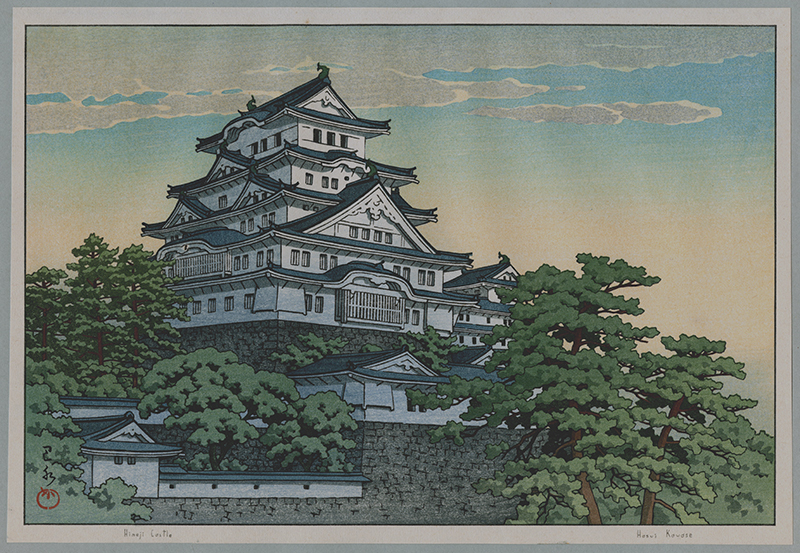
19th, 20th & 21st Century Fine Prints
707-546-7352 · fax 707-546-7924 · web: www.annexgalleries.com · email: artannex@aol.com
Himeji Castle (May, from the Calendar for the Pacific Transport Lines, 1953) by Kawase Hasui

Himeji Castle (May, from the Calendar for the Pacific Transport Lines, 1953)
Kawase Hasui
Himeji Castle (May, from the Calendar for the Pacific Transport Lines, 1953)
Kawase Hasui
1883 - 1957 (biography)This image is used to illustrate the month of May in this series of original woodcuts for the calendar. This work has not been reprinted after the initial edition of 500. The title and the artist's signature are printed in English in the margin. This impression is still attached at the top to the original card from the calendar.
The Himeji Castle is a hilltop Japanese castle complex located in Himeji, in Hyogo Prefecture, Japan. The castle is regarded as the finest surviving example of prototypical Japanese castle architecture, comprising a network of 83 buildings with advanced defensive systems from the feudal period.
Also from the Hotei/Hasui catalogue raisonné, page 131:
"Narazaki explains that 500 examples of this calendar were commissioned by the Pacific transport lines for distribution in the United States and that it was created within the time-honored tradition of meisho-e (pictures of famous views). He adds that while Hasui did not ordinarily undertake this type of work, the artist seems to have become quite engrossed in this project in an effort to convey a sense of the quintessential Japanese landscape." and "Both the publisher Watanabe Shozaburo and Hasui attached importance to the fact that these compositions were intended as souvenirs for foreigners."
